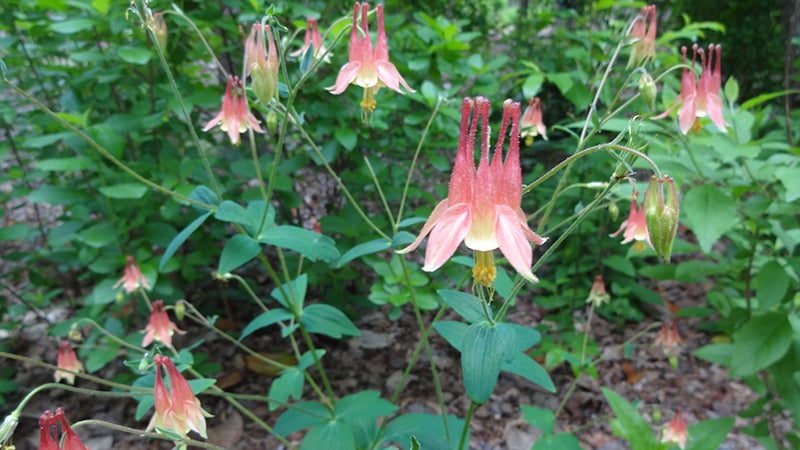Red Columbine important to pollinators
Published 10:42 pm Friday, May 8, 2020

- Once established, Red Columbine is easy to grow in a woodland garden with moist soil.
|
Getting your Trinity Audio player ready...
|
Red Columbine
Aquilegia canadensis
This is one of our loveliest early spring flowers, with hanging red flowers that have long spurs and yellow centers. The nectar at the base of the spurs attracts long-tongued insects and hummingbirds. The flowers are mature when migrating hummingbirds appear in our area, and are important food for these little birds, and for early butterflies and bees as well. Insects seeking the nectar will brush against the extended anthers, collecting pollen to transfer to a neighboring flower with receptive female parts.
Native to eastern U.S., Red Columbine is found in most counties of Virginia, growing wild in roadsides and forest edges. This early, long-blooming (March-May) spring plant forms small clumps about 2 feet tall. Once established, Red Columbine is easy to grow in a woodland garden with moist soil.
This perennial has a light, airy appearance, but is very durable and tolerant of cold weather. The aboveground plant disappears in the fall, but returns each year from the fibrous roots. As the plant self-seeds in early autumn, sprouts will appear the next year in other favorable garden locations, and seeds are easily collected for distribution in other areas. Red Columbine looks wonderful when planted with Golden Ragwort, Confederate (white) Violets and Wild Blue Phlox.
Attractive, lacy blue-green leaves are compound, divided into round-lobed threes. After the flowers fade, leafminers will leave traces in the leaves but they do not damage the roots of this perennial. When the leaves become unsightly, they can be removed, with no harm to the plant. Deer will avoid Red Columbine as the foliage is toxic.
HELEN HAMILTON is past president of the John Clayton Chapter, Virginia Plant Society. For more information about native plants, visitwww.vnps.org.



